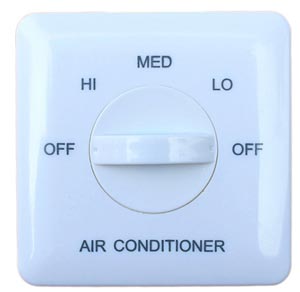The contacts of the contactors are made up of
Right Answer is:
All of the above
SOLUTION
A contactor is very similar to a relay except that a contractor contains large-load contacts designed to control large amounts of current. In the heating and air conditioning field, contactors are often used to connect power to resistance heater banks. Contactors may contain auxiliary contacts as well as load contacts.

Materials used for making contacts operate under the severest conditions when the contacts make and break the electric circuit very frequently. When the contacts are separated, an arc is produced between the contacts ionizing the medium between the contacts. The contacts have to withstand arcing or sparkover. The contact is damaged with time due to corrosion from oxidation and erosion from fusing.
The following materials are used rot making the contacts depending upon the power level of the electric circuit.
Lightly Loaded Contacts: They are made from pure noble metals such as platinum, palladium, gold, and silver. The alloy of platinum with iridium is used for making contacts of very high reliability. Silver or its alloys with copper are the commonly used materials for the contacts. Rhodium also is an excellent contact material. Tungsten and molybdenum are also in use because of the high cost of noble metals. Non-arcing contacts are made by electrodeposition of platinum, gold, silver, palladium, or rhodium on springs and contact surfaces thus reducing the cost Without loss inefficiency.
- Platinum
- It does not oxidize in air.
- It has no tendency to arc but it may form bridges and needles at low current.
- It is often alloyed with iridium for making light contacts of extra-high reliability.
- It is one of the most stable of all metals under the combined action of corrosion and electrical erosion.
- It has a high melting point and does not corrode and surfaces remain clean and low in resistance under most adverse atmospheric and electrical conditions.
- Palladium
- It has properties similar to that of platinum.
- It has no tendency to arc but it may form bridges and needles at low current.
- It is often alloyed with iridium for making light contacts of extra-high reliability.
- It is one of the most stable of all metals under the combined action of corrosion and electrical erosion.
- It has a high melting point and does not corrode and surfaces remain clean and low in resistance under most adverse atmospheric and electrical conditions.
- Silver
- It has the highest thermal conductivity of any metal.
- It has low contact surface resistance since its oxide decomposes at approximately 150°C.
- As silver oxides readily dissociate at a relatively low temperature; the stability of contact resistance is slightly affected by them. Nevertheless, it is not recommended to use silver for contacts in light and precise devices with low contact pressures. Otherwise, silver is widely used as contact material, either alone or alloyed with copper.
- Since silver readily combines with sulfur, therefore, measures should be taken not to allow it to come into contact with sulfur-bearing substances, e.g., rubber.
- Gold
- It is similar to platinum in corrosion resistance but has a much lower melting point. Because of its softness, it is usually alloyed with some other metals.
- Gold and its alloys are ductile and easily formed into a variety of shapes.
- Gold alloys of silver and other metals are used to impart hardness and improve resistance to mechanical wear and electrical corrosion.
Metals for heavily loaded contacts:- The operating condition of the heavily loaded contact is 500V. The materials used for heavily loaded contacts are discussed below:
- Silver
- Silver-palladium
- Silver-copper
- Silver-cadmium
